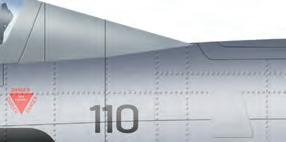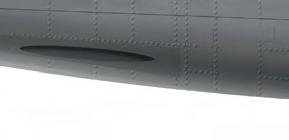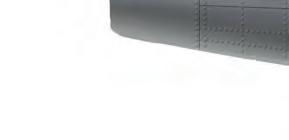




















































France has a proud tradition of building its own cuttingedge combat aircraft – a tradition that is inextricably linked to one company: Dassault. Marcel Bloch had been a successful aircraft manufacturer before the Second World War, but when France was looking to rearm during the post-war period he seized the initiative to produce the first all-French jet fighter, the Ouragan.
From this starting point, Dassault kept pace with its rivals by rapidly evolving the Mystère series through numerous iterations during the 1950s. The company only truly hit its stride, however, with the outstanding and extraordinarily successful Mirage III series. The lightweight Mirage III with its delta wing and distinctive dart-like appearance offered outstanding performance and quickly became a combat-proven product – scoring kills against MiG-17s and MiG-21s in Israeli hands during the late 1960s.
It did well on the export market and even better when the French stripped out its costly and hard-to-maintain radar, calling the resulting simplified aircraft Mirage 5. This was then marketed as a cut-price multirole fighter and sold to smaller and more budget-conscious air forces.
Dassault’s ‘the customer is always right’ attitude resulted in an astonishing wealth of different variants, many tailored to the specific needs of the purchaser in a way that other combat aircraft seldom were. And then there were the copies – Israel famously acquired the plans to the Mirage III and built its own version, known as the IAI Nesher. The Nesher then became the
Kfir, which is still available to purchase brand new from IAI nearly 65 years after the Mirage III first flew, and this in turn spawned the South African Atlas Cheetah.
Meanwhile, Dassault had supplied the highly capable Étendard IV and Super Étendard as carrier fighters for the French Navy and followed up the Mirage III/5’s success with the Mirage F1. With a conventional non-delta layout, the F1 proved to be an excellent multirole fighter and again garnered numerous orders from international customers.
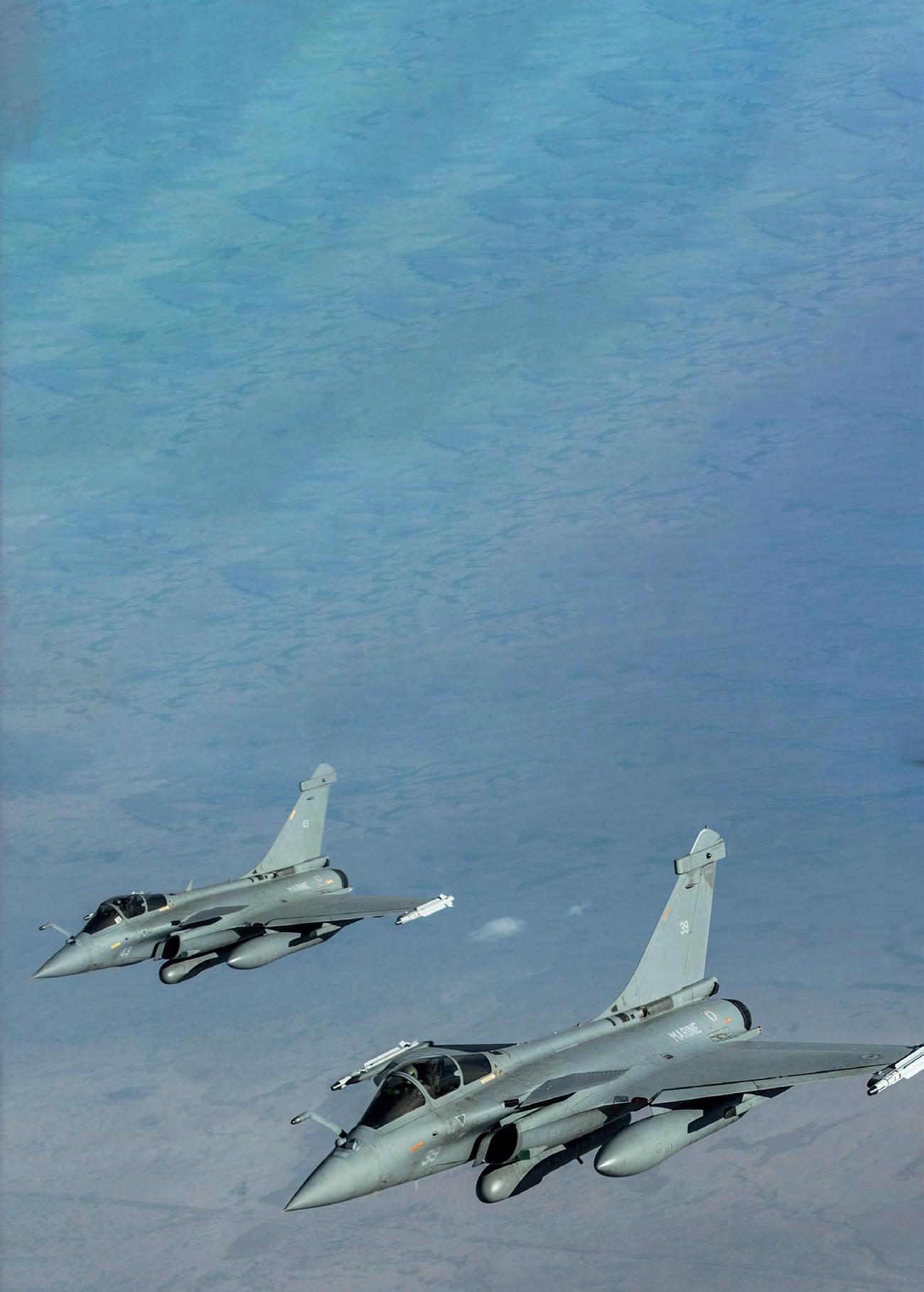
The French Air Force entered the modern era with the superb Mirage 2000 – yet another versatile combat aircraft which, despite looking remarkably similar to the Mirage III/5, was completely new and embodied all the latest technological advances in a compact and relatively affordable package.
Most recently, Dassault’s excellent Rafale has been at the forefront of French military aviation and has recently enjoyed a remarkable degree of success in attracting international buyers. Now Dassault is working with German and Spanish partners on FCAS – Europe’s Future Combat Air System – but its legacy fighters continue to fly and fight with air forces around the world.
This publication chronicles the combat jets of the French Air Force from 1952 to the present day through the beautiful artworks of renowned aviation illustrator JP Vieira. I hope you enjoy marvelling at the incredible variety of designs as much as I have.
Dan SharpJP Vieira is an illustrator producing military history and aviation-themed artwork. He is entirely self-taught and aims to constantly improve both his technical and digital methods. His attention to detail and constant pursuit of improvement makes his artworks both accurate and artistically pleasing.
JP has collaborated with numerous authors, editors and publishers on a wide variety of publications – including USAF Fighters, US Navy Jet Fighters, Marine Corps Jet Fighters and most recently US Jet Fighters in Foreign Service for Tempest Books.
Two Dassault Rafale M F2s of the Aéronavale over Iraq during Operation Inherent Resolve on January 8, 2016.


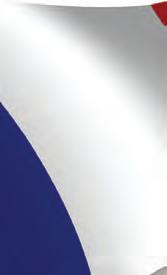













































































































































































052
DASSAULT MIRAGE 5



076
DASSAULT MIRAGE F1






102




















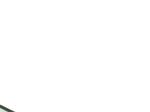









































DASSAULT MIRAGE 2000


































All illustrations: JP VIEIRA
Design: DRUCK MEDIA PVT. LTD.



















Publisher: STEVE O’HARA
Production editor: DAN SHARP
034
DASSAULT MIRAGE III


























Published by: MORTONS MEDIA GROUP LTD, MEDIA CENTRE, MORTON WAY, HORNCASTLE, LINCOLNSHIRE LN9 6JR









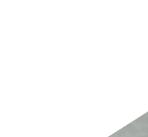











Tel. 01507 529529









ISBN: 978-1-911703-08-2




090 SEPECAT JAGUAR

DASSAULT MIRAGE IV 072





116 DASSAULT RAFALE







© 2023 MORTONS MEDIA GROUP LTD. ALL RIGHTS RESERVED. NO PART OF THIS PUBLICATION MAY BE REPRODUCED OR TRANSMITTED IN ANY FORM OR BY ANY MEANS, ELECTRONIC OR MECHANICAL, INCLUDING PHOTOCOPYING, RECORDING, OR ANY INFORMATION STORAGE RETRIEVAL SYSTEM WITHOUT PRIOR PERMISSION IN WRITING FROM THE PUBLISHER.












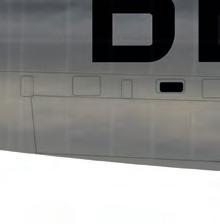
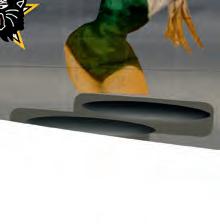
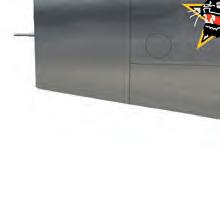

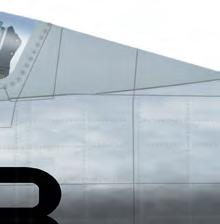


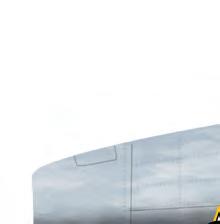






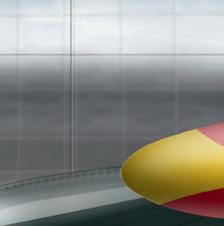
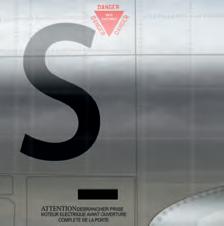




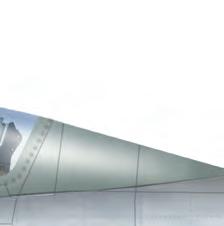
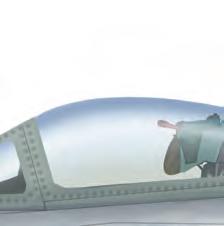
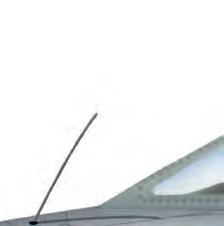
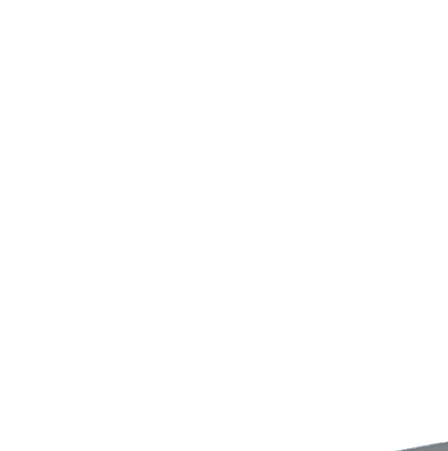











Marcel Bloch was already a pivotal gure in the French aviation industry long before the Second World War – not just an engineer but an industrialist managing thousands of staff across multiple factory sites. So when France emerged from the war years and began to rebuild its armed forces, he was well placed to assemble the team and sign the deals needed to create the nation’s rst jet ghter: the Ouragan.
Dassault MD 450 Ouragan, 2-SS/184, Escadron de Chasse 3/2 ‘Alsace’, Armée de l’Air (Fighter squadron 3/2, French Air Force), air base 102, Dijon-Longvic, France, 1954. Beneath the EC 2/3 emblem, this aircraft carries both the blazon of Alsace and that of the city of Strasbourg. The aircraft also has the inscription ‘de Saxcé’, an homage to the pilot Slt Arnaud de Saxcé, from Groupe de Chasse n°1 ‘Alsace’/Squadron 341, killed in combat in April 1945.

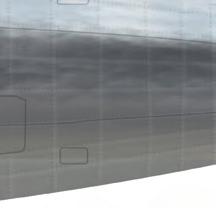


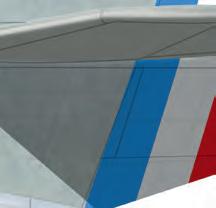








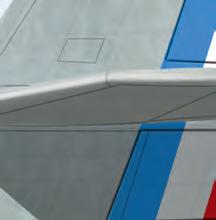
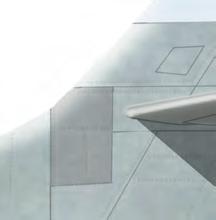
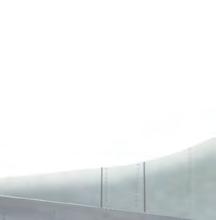
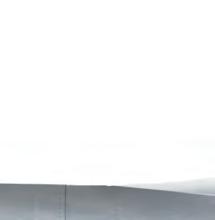
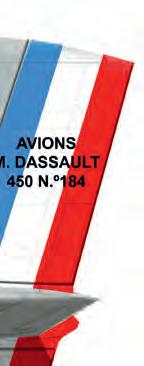


Dassault MD 450 Ouragan, BB/328, 2éme Escadron






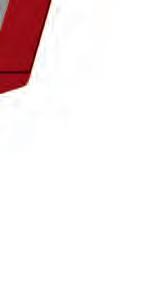
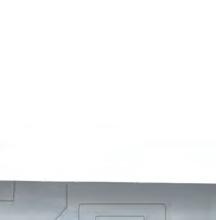


d’Instruction en Vol Henry Jeandet de l’Ecole de chasse, Armée de l’Air (2nd Flight instruction squadron Henry Jeandet, Fighter School, French Air Force), air base 708, Meknès, Morocco, 1957.
This Ouragan carries appropriate nose art for its BB serial.


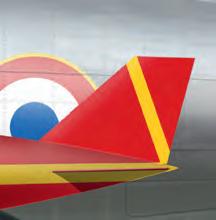
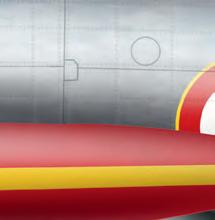



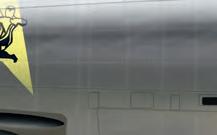

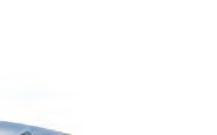


















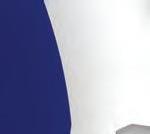


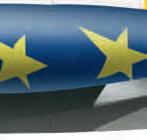
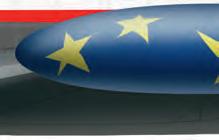
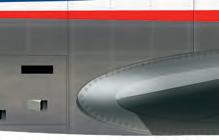
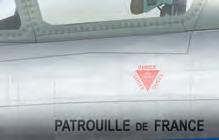







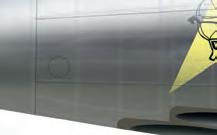
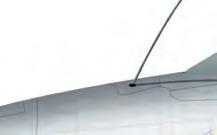

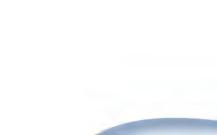

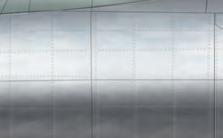

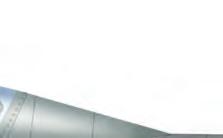
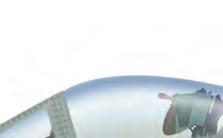


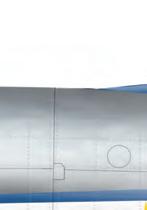
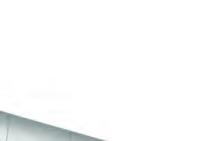
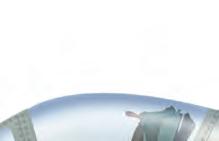
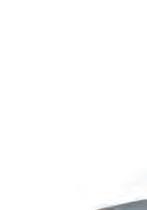
Dassault MD 450 Ouragan, 155, Escadron de Chasse 3/4 ‘Flandre’, SPA 160 ‘Diable Rouge’, Armée de l’Air (Fighter squadron 3/4, Flight 160, French Air Force), Patrouille de France, air base 136, Bremgarten, West Germany, 1956. The famous Patrouille de France aerobatic team ew the Ouragan from 1954 until 1957; in the early years, the team was constituted with aircraft and personnel from several different units consecutively.


Dassault MD 450 Toofani, IC568, No. 29 Squadron ‘Scorpions’, Indian Air Force, Halwara Air Force Station, Punjab, India, 1958. This squadron ew the Toofani (Indian designation for the Dassault Ouragan) for a few months in 1958, being disbanded after that; the squadron would re-form in 1967



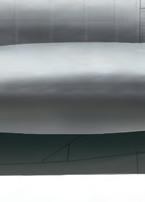
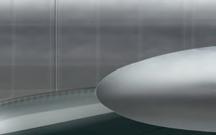
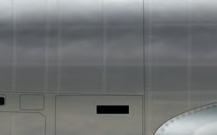
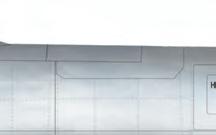
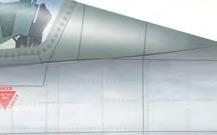


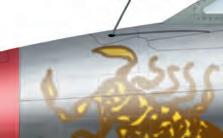

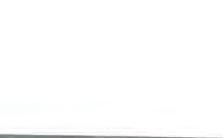
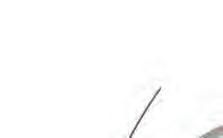


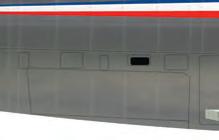

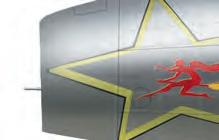
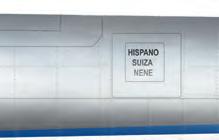
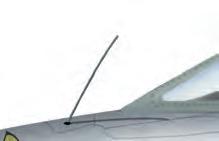
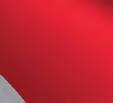
Dassault MD 450 Toofani, IC556, No. 47 Squadron ‘Archers’, Indian Air Force, Halwara Air Force Station, No. 47 Squadron ew the Toofani from 1959 until 1968, participating in the Indo-Pakistani War of 1965.
Punjab, India, 1965.


Released from Buchenwald concentration camp in April 1945, Marcel Bloch returned to France eager to re-enter the aircraft building industry. His company, Société Anonyme des Avions Marcel Bloch (SAAMB), still existed and he was able to reclaim and reorganise it –including his factories at Saint-Cloud, Boulogne and Talence. Many of his original skilled employees returned to him between May and November 1945.
The company was reorganised again in November with SAAMB becoming a holding company, leasing its factories to subsidiaries at the three sites.







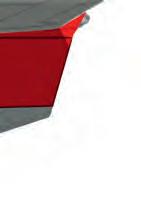
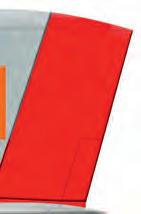

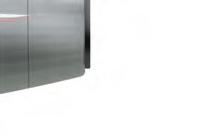

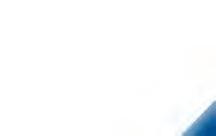

Construction work began on a light twin-prop transport aircraft, the MB 303 Flamant or ‘Flamingo’, for the French Air Force and while this was being built Bloch laid plans for something much more ambitious – France’s rst home grown jet ghter.



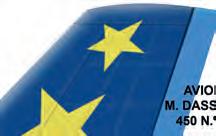
Bloch signalled his intent in January 1947 by changing both his own name and his company’s name to Marcel Dassault. Famously, ‘Dassault’ had been the nom de guerre used by his elder brother Darius Paul Bloch as a member of the French resistance. The numerical sequence of Bloch types was continued but with ‘MD’ instead of ‘MB’.


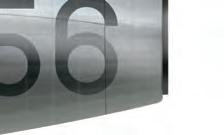
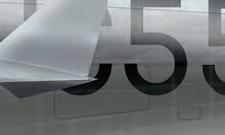

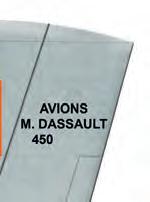
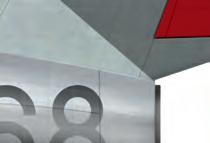
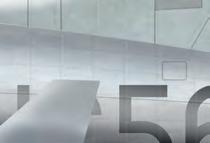

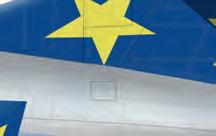

Initial designs for the new ghter, worked up by Dassault’s engineers, were presented to the French government in September 1947 but did not result in an order. The company pressed on using its own funds however, and detailed design commenced that December. Construction of a single prototype began in April 1948 as the MD 450 and the government nally issued a contract for three prototypes on June 29, 1948.
A crucial aspect of the design, which otherwise leaned on contemporary American ghter layouts, particularly that of the F-84, was the engine. Fortunately, the French arm of Hispano-Suiza had begun to build the British Rolls-Royce Nene centrifugal ow turbojet under licence so it could be tted to de Havilland Vampire ghters that were also being built under licence in France. As such Dassault was easily able to secure an initial supply from Rolls-Royce itself and to then source further examples from the local licence-builder.
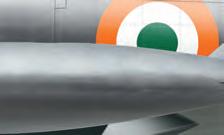
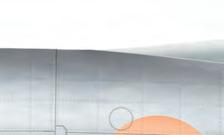

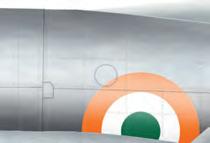
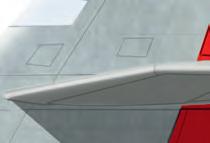
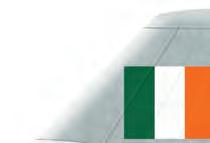


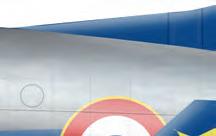
The MD 450 Ouragan or ‘Hurricane’ was indeed rather similar to the F-84 Thunderjet in appearance, with lowset straight wings, a nose intake, fullvision teardrop canopy and tricycle undercarriage. It was smaller though, weighed about a ton less, and had thinner wings which were more like those of Lockheed’s F-80 Shooting Star.
The rst prototype, MD 450 01, made its ight debut on February 28, 1949, piloted by Kostia Rozanoff, and when it proved to be a success, the French government placed an order for 150 production model Ouragans.
And once the third prototype had been delivered, the French government ordered 15 pre-production test aircraft. Only a dozen of these would actually

Dassault MD 450 Ouragan, 64, 113 squadron ‘Hornet’, Israel Defense Force/Air Force, Hatzor air base, Israel, 1966.
Israeli Ouragans had a signi cant career and still participated in the 1967 Six-Day War.



















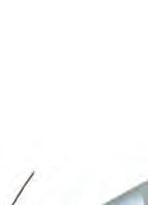






Dassault MD 450 Ouragan, 42, 113 squadron ‘Hornet’, Israel Defense Force/Air Force, Hatzor air base, Israel, 1956.
Besides the prominent shark mouth, this aircraft has the yellow and black identi cation stripes for its participation in the Suez con ict of 1956.

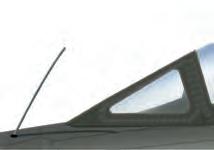


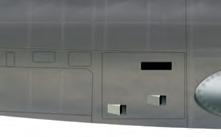

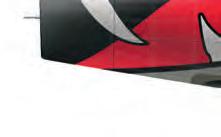
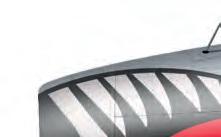
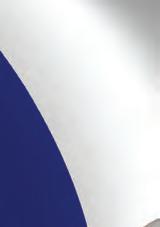
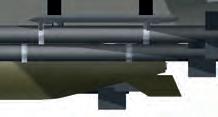
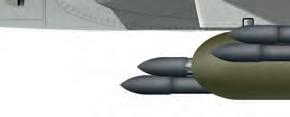



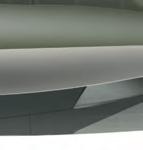
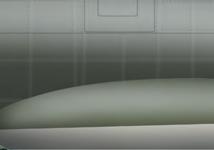

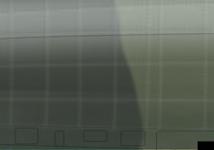

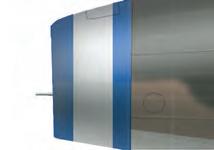

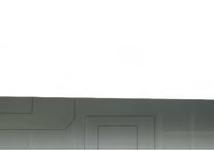
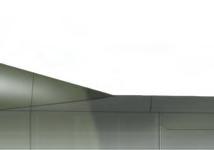

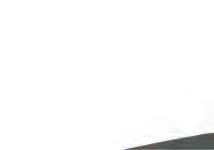



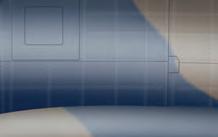

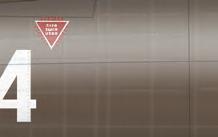
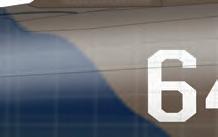
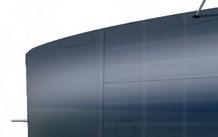
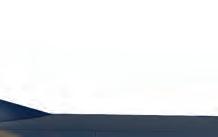




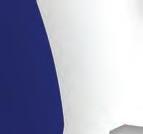
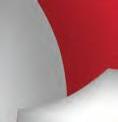

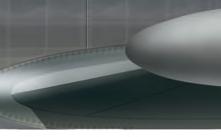
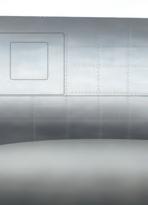
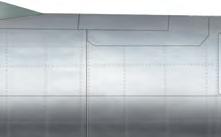
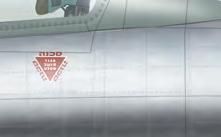

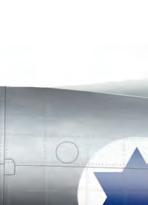
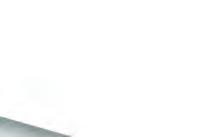

Dassault MD 450 Ouragan, 704, Fuerza Aérea Salvadoreña (Salvadorean Air Force), El Salvador, 1982. El Salvador acquired 18 Ouragans in the early 1970s from Israel; the aircraft would see action in the country’s internal con icts up until the early 1990s.
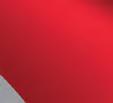
be built but they were used to trial a variety of engines, different weapons and payload arrangements and even a solid-nose radar installation with side intakes.
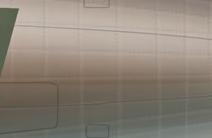
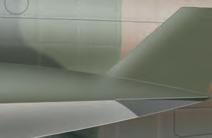
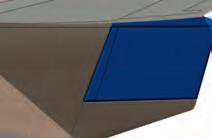




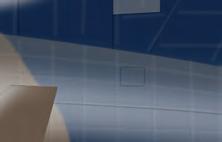
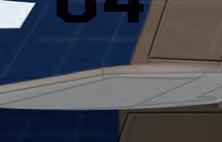
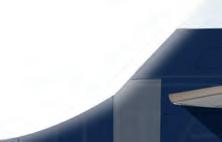


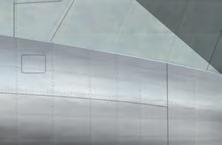
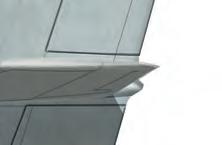

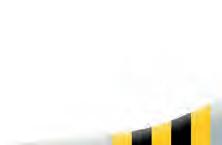

Deliveries of the rst production model Ouragans commenced in 1952, with the type replacing the French Air Force’s increasingly antiquated de Havilland Vampires. All examples had wingtip fuel tanks tted. Armament was a quartet of Hispano Mark V 20mm cannon under its nose intake and a metric ton of stores could be carried under the type’s wings. A typical load might include two 450kg bombs, or eight 105mm Matra T10 rockets and a pair of 460-litre napalm bombs, or just 16 rockets.
The rst 50, designated MD 450A, had Rolls-Royce-made Nene 102 engines while later examples, designated MD 450B, had HispanoSuiza-made Nene 104Bs. The latter engine was somewhat lighter than its predecessor and offered marginally improved thrust.
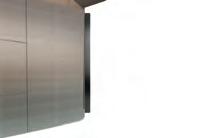


The Ouragan was reportedly a stable gun platform with good handling characteristics but suffered from an unfortunate tendency to enter a flat spin if the pilot attempted to pull a tight turn. The type was phased out of frontline service with the French Air Force starting in May 1955 as the somewhat better Mystère IV became available and the last French examples were retired from operational units in 1961. A handful would soldier on into the mid-1960s as advanced trainers. The Patrouille de France display team, having started out in 1953 with Republic F-84G Thunderjets, flew the Ouragan from 1954 to 1957 before switching to the Mystère IV.
A single Ouragan underwent modi cations to make the type suitable for rough eld operations in Algeria – brake parachutes were installed to decrease landing distance and their single-wheel undercarriage mainwheels were upgraded to two wheels per leg with low pressure tyres. The ‘Barougan’, as it was dubbed, rst ew on February 24, 1954, with Paul Boudier at the controls. However, budget cuts meant it was never ordered into production.





Seventy-one Ouragans tted with the improved Nene 105 engine were ordered by India in 1953 and most of them had been delivered by the end of the year. Another 33 were later bought from French Air Force stocks. In Indian service, the aircraft was given the name ‘Toofani’, the Hindi word for Hurricane, and it was retired from front line units starting in 1958.
The Israeli Air Force ordered 24 Mystère IICs in 1955 but when the type was found to have structural issues it bought 75 Ouragans instead as a stopgap while waiting for a delivery of the new Mystère IVA. Deliveries commenced just in time for the type to be used during Operation Musketeer in 1956 – the Israeli, British and French invasion of Egypt to secure the Suez Canal. Ouragans of the IAF ew close support missions and even successfully engaged Egyptian MiG-15s in air-to-air combat.


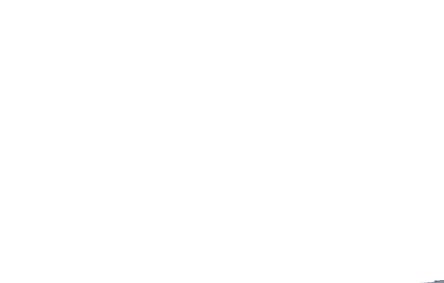
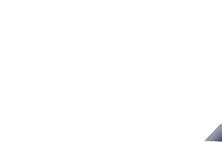





Before long the IAF’s Ouragans were shifted to the advanced trainer role but they would see combat once again during the Six-Day War in 1967. Eighteen Israeli Ouragans were purchased by El Salvador in 1975, where they would continue to y into the early 1990s.

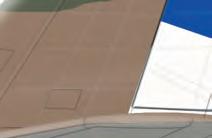


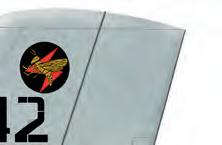

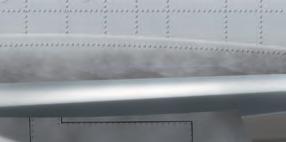
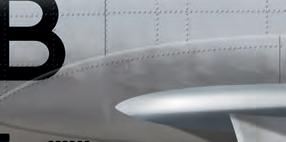



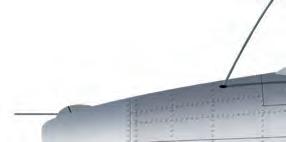
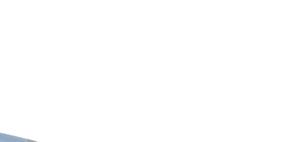
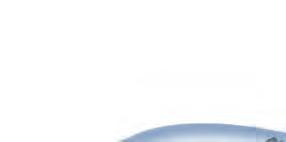






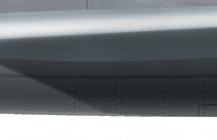
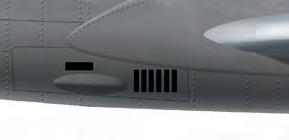

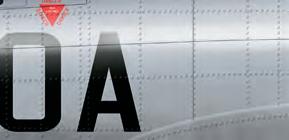


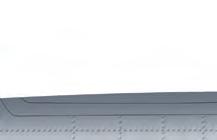
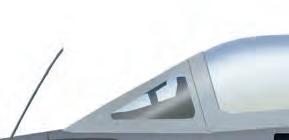









The MD 452 Mystère II series was effectively Dassault’s learning curve as the company struggled to develop its jet ghter into a modern and internationally competitive machine. The Mystère IIC was the variant that would enter series production.




